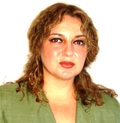Dear colleagues,
When I read the news that the BRICS bank and the CRA had been created I was very thrilled and celebrated. I think we should all do so.
Like many of us, I had been advocating for many years that the South should have a far greater say in global governance; in the last 10 years, i was arguing the emerging and developing economies should have their own financial institutions, as they had the savings and the forex resources to do this; for an early paper prepared for G24 on this, see http://www.stephanygj.net/papers/Enhancing-Role-RDBs.pdf
I think it is a marvelous achievement that the BRICS have created these institutions and we should do all we can to both support it and make constructive suggestions on how they may wish to do it so as to maximize impact on sustainable and inclusive development.
I think the BRICS(new Development ) bank is clearly a very valuable institution. There are huge unmet needs in infrastructure, including for giving clean water and electricity to the many who do not have it, but also to build key infrastructure for supporting structural change and sustainable development. Bhattacharya, Romani and Stern estimate this need at around $1 trillion a year! The existing institutions cannot do it on their own, so the New Development Bank can help supplement existing investment . In my recent paper for UNCTAD
http://www.stephanygj.net/papers/BRICSBankUNWorkingPaper2014.pdf
and in the shorter piece for the Financial Times, attached
I estimate that, given certain assumptions, in 20 years the New Development Bank could be lending around $35 billion annually; this would be more than the World Bank currently lends for infrastructure a year. Not a panacea, but a very important contribution, especially if-as is seems likely- the Bank is well run and fairly agile.
Clearly the New Development Bank will improve global governance, by reflecting more accurately new global trends; it will be a large bank owned and run mainly by emerging and developing economies. We should hope and expect it will be well run; it can after all build on the expertise of the CAF, the BNDES, the Chinese, Indian and South African Development Banks, as well as that of the World Bank , Asian , African and Inter-American Development Bank. It has the advantages of latecomers, and it can learn positive and negative lessons; it can both compete in a healthy way with, and clearly complement existing institutions, like the World Bank.
The CRA , the liquidity facility is also potentially very important, as an alternative or complement to IMF ; however, it would be better if it had its own condtions and not be attached to IMF conditionality, as has been reported would be the case, beyond 30% of quota.
I look forward to further discussions in this excellent forum
Best
Stephany
Professor Stephany Griffith-Jones
Financial Markets Director
Initiative for Policy Dialogue
Columbia University USA
When I read the news that the BRICS bank and the CRA had been created I was very thrilled and celebrated. I think we should all do so.
Like many of us, I had been advocating for many years that the South should have a far greater say in global governance; in the last 10 years, i was arguing the emerging and developing economies should have their own financial institutions, as they had the savings and the forex resources to do this; for an early paper prepared for G24 on this, see http://www.stephanygj.net/papers/Enhancing-Role-RDBs.pdf
I think it is a marvelous achievement that the BRICS have created these institutions and we should do all we can to both support it and make constructive suggestions on how they may wish to do it so as to maximize impact on sustainable and inclusive development.
I think the BRICS(new Development ) bank is clearly a very valuable institution. There are huge unmet needs in infrastructure, including for giving clean water and electricity to the many who do not have it, but also to build key infrastructure for supporting structural change and sustainable development. Bhattacharya, Romani and Stern estimate this need at around $1 trillion a year! The existing institutions cannot do it on their own, so the New Development Bank can help supplement existing investment . In my recent paper for UNCTAD
http://www.stephanygj.net/papers/BRICSBankUNWorkingPaper2014.pdf
and in the shorter piece for the Financial Times, attached
I estimate that, given certain assumptions, in 20 years the New Development Bank could be lending around $35 billion annually; this would be more than the World Bank currently lends for infrastructure a year. Not a panacea, but a very important contribution, especially if-as is seems likely- the Bank is well run and fairly agile.
Clearly the New Development Bank will improve global governance, by reflecting more accurately new global trends; it will be a large bank owned and run mainly by emerging and developing economies. We should hope and expect it will be well run; it can after all build on the expertise of the CAF, the BNDES, the Chinese, Indian and South African Development Banks, as well as that of the World Bank , Asian , African and Inter-American Development Bank. It has the advantages of latecomers, and it can learn positive and negative lessons; it can both compete in a healthy way with, and clearly complement existing institutions, like the World Bank.
The CRA , the liquidity facility is also potentially very important, as an alternative or complement to IMF ; however, it would be better if it had its own condtions and not be attached to IMF conditionality, as has been reported would be the case, beyond 30% of quota.
I look forward to further discussions in this excellent forum
Best
Stephany
Professor Stephany Griffith-Jones
Financial Markets Director
Initiative for Policy Dialogue
Columbia University USA

